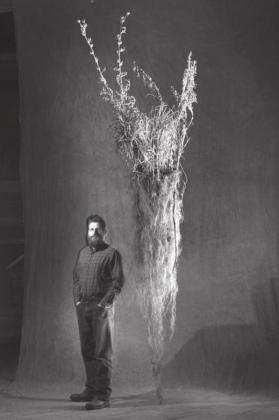The Underground World of Roots
A few months ago I wrote about all of the inner working of leaves, the most obvious part of plants that we are most familiar with. Today, I want to discuss roots, the least familiar part of plants for most of us.
In general, roots have three functions: holding the plant firmly in the ground, absorbing water and minerals for the whole plant, and producing hormones. Without the first, trees and flowers and even grass would fall over and be blown around by the wind. Without the second function, none of the normal biological processes the plant needs to live, grow and reproduce would be possible. Among the hormones produced by the roots are cytokinin and gibberellin, necessary for shoot growth and development.
One specialized function of roots in some species of plants such as carrots, beets and radishes, is the unusually large amount of carbohydrate storage in the roots—the parts we eat.
Roots of different species of plants tend to have different structures. Most dicots (broadleaved woody and herbaceous plants) tend to have a single root that grew from the embryo as the seed germinated, and that is called the taproot. Some taproots are much larger than all other branching or lateral roots, while some are no larger than the lateral roots. In many such plants, the underground root system has a structure similar to the above-ground portion of the plant with a main stem and branches.
For monocots (grasses, lilies, palms), the growth of the roots begins at the base of the leaves, not with the embryonic root, and these roots do not in general branch, but each grows down from the surface of the ground. These roots are called “adventitious roots” which make up a fibrous root system with a mass of roots extending from the ground deep into the soil.
Most of the adsorption of water and minerals that occurs in the root system of a plant does not take place in either the taproot, the lateral roots or the fibrous roots, but rather in the tiny root hairs that branch off from the other, much larger, roots. These tiny root hairs can be one tenth or less the size of the larger roots. They may also have a much shorter lifespan and are replaced often.
In order for roots to grow, the tips must push their way through the soil, mostly into the pores between soil particles. This “movement” through the soil occurs because a section of root cells just behind the root tip absorbs more water and expands in size, pushing the tip forward. The very tip of the growing root has hardened cells that can keep it from wearing away as it is pushed through the soil.
Most species, especially deciduous plants, store carbohydrates in the winter that are produced in green leaves by photosynthesis. It is this stored material in the roots that allows the plants to produce the first blooms and/or leaves in the spring before there are enough leaves to carry out more photosynthesis.
The roots of most species of plants have a symbiotic association, called mycorrhizae, with soil fungi. The fungi grow tiny thread-like cells called hyphae into the roots which carry phosphorus into the roots, which gives the roots much more of this essential element than they could absorb from the soil without the fungi. The fungi get sugar produced by the plant which it needs to live.
Another symbiotic relationship exists in the root zone of legumes such as beans, peas, mesquite, alfalfa and clover. These are frequently called nitrogen-fixing plants, but it is not the plants that have the unusual ability to “fix” nitrogen. (Elemental nitrogen is obviously omnipresent in the air, but plants cannot utilize nitrogen in that form—only in the forms of nitrate, nitrite or ammonia.) But there is a soil bacterium, called Rhizobium, that can indeed “fix” nitrogen and supply the plants to which they associate with useable nitrogenous compounds. It does so by invading parts of the roots of legumes and forming nodules in the roots that contain nitrogen in forms the plant can use. And the bacterium receives sugars from the plant.
From the foregoing, it should be obvious that healthy soil fungi and bacteria are essential, along with other soil organisms, (nematodes, earth worms, beetles, ants, etc.) for healthy plants, and in turn healthy plants are essential for a healthy soil. If we do what we can to help the above ground vegetation, we will also help the below-ground parts as well.
Until next time…
Jim Stanley is a Texas Master Naturalist and the author of the books “Hill Country Ecology,” “Hill Country Landowner’s Guide” and “A Beginner’s Handbook for Rural Texas Landowners.” He can be reached at <jstmn@ktc.com>. Previous columns can be seen at <www.hillcountrynaturalist. org>.

